Announced as part of a trio of lenses for Nikon’s new full-frame mirrorless Z system, the Nikon Nikkor Z 50mm F1.8 S is a moderately fast standard lens with a relatively complex optical design.
It features 12 elements in nine groups, with two extra-low dispersion (ED) and two aspherical elements, along with the usual Nikon Integrated Coating (NIC) and Nano-Crystal Coat to help mitigate flare and ghosting. Along with a slightly shorter-than-usual minimum focus distance of 40cm (15.7″), the lens has a nine-blade aperture to improve the circular rendering of out-of-focus highlights, and features an internal focus mechanism that uses a stepper motor.
The lens is made from aluminum and engineering plastic and is sealed against dust and moisture. Like the majority of rival mirrorless lenses, it has no external distance markings, but that allows for a wide, finely-machined, well-damped focus ring. Measuring 87mm x 76mm (3.43” x 2.99”) and weighing 415g (0.91 lb), the new Nikkor Z 50mm F1.8 S is larger and heavier than the F-mount equivalent at 53mm x 72mm (2.07” x 2.83”) and 185g (0.41 lb).
Key Specifications:
- Full-frame format
- Available in Z-mount only
- Aperture range f/1.8–f/22
- 62mm filter thread
- Minimum focus distance: 40cm (15.7”)
- Weight: 415 grams (0.91 lb)
Overall lens image quality
Tested in conjunction with the high-resolution 45.7MP Nikon Z 7 body, the Nikon Nikkor Z 50mm F1.8 S Overall score is 44, with a very high sharpness sub-score of 37 PMpix.
This lens’s sharpness is particularly impressive not just centrally, but across the whole image field—from the center out to the edges and corners. Sharpness is good from the initial aperture of f/1.8, but it’s best in terms of peak sharpness at f/2.8. After that, the sharpness becomes more uniform across the image field (frame) and up until around f/5.6-8, where the beginnings of the effects of diffraction can be seen. At smaller apertures, the impact on sharpness due to diffraction is clear.
Lateral chromatic aberration is well-controlled, with very low levels at all apertures. The lens is also noteworthy for its low levels of distortion, and it has high light transmission (1.9 TStop), which means it likely has good resistance to flare and ghosting.
Image quality compared to its competitors
The Z-system is still in its infancy, but it’s intriguing to see how the combination of new optical design, wider mount, and shorter register compares to some Nikon F-mount and Canon EF lenses, as well as to some equivalent models for Sony mirrorless cameras.
The Nikon’s overall score of 44 places it ahead of such lenses as the AF-S Nikkor 50mm F1.8G on the Nikon D800E, which is the best-performing Nikon DSLR body in terms of resolving power in our database (at least till we add the 45.7MP D850). And the new Nikkor is also comfortably above the Canon EF 50mm F1.8 when mounted on a 50MP Canon EOS 5DS R. The new lens has more in common in terms of optical quality with much more expensive models from Zeiss, Sony, and Sigma. Sharpness is extremely high on the new Nikkor Z 50mm, and that may be important to you when you want to capture maximum detail with the Nikon Z 7.
In-depth comparisons
For a more detailed examination of optical performance, we’ll compare the new Nikkor with two lenses made for the F-mount: the accessibly-priced AF-S Nikkor 50mm f/1.8G, and the money-is-no-object, manual-focus Zeiss Otus 55mm F1.4. As they’re made for a Nikon DSLR, we’ve mounted them on the most up-to-date hi-res Nikon camera we have available, the 36.3 MP Nikon D810—though it should be noted that the highest-resolving Nikon we’ve tested is the D800E, shown in our rankings above. (Check back to see the results on our interactive comparison tool after we’ve added the data from the latest 45.7MP Nikon D850.)
Sharpness
Comparing this lens’s results at f/2.8, the Nikkor Z is a very sharp lens and several notches better than the AF-S Nikkor equivalent. It’s not just that the new Nikkor has higher sharpness, but that it has more uniform sharpness across the image field (frame) than its AF-S predecessor. As you can see by the diverging solid and dotted blue lines, the earlier AF-S lens has noticeable astigmatism.
In terms of edge-to-edge sharpness, technically the Otus consistently outperforms the Nikkor Z. It’s not by much, but it contributes to the higher overall score, even if the Nikkor Z can outdo the Zeiss for peak sharpness (37 vs. 33 P-Mpix). Although the Nikkor performs very well wide-open, peak sharpness is just over one stop down at f/2.8, and stopping down improves only the uniformity. Inevitably, diffraction reduces the overall sharpness from f/5.6-8, though it’s particularly noticeable from f/11 onwards.
Chromatic aberration
The graph below shows the width in microns for the two measured values of lateral chromatic aberration for each lens at f/1.8 from the image center at 0% to the corners of the frame at 100%. There are two values because lateral color is revealed in the focus plane on either side of high-contrast edges, usually as cyan and magenta fringing. If a lens were perfectly corrected, both values would be at 0µ on the grey horizontal line.
All three lenses are well-corrected, and each one exhibits more aberrations towards the edges, which is typical for this type of fringing. The differences between the three lenses are minimal, with all of them showing only one pixel of chromatic aberration.
Don’t forget that this type of fringing is usually easy to clean up either in-camera or post-capture, and rarely lowers image quality after removal.
Geometric distortion
Standard or normal lenses like this don’t usually show much geometric distortion, and if and when they do, it’s typically very slight barrel-shaped distortion. Both the Nikkor Z and Zeiss have minimal 0.2 (%) barrel-type distortion. That level would be difficult to perceive even in images with straight lines. Measured at 0.4%, however, the AF-S Nikkor has enough barrel distortion to likely be noticeable in images with any linear elements, especially any that are close to the borders of the frame.
Vignetting (corner shading)
Illumination fall-off towards the corners is shown in the graph below for each of the three lenses at its widest aperture, where it would be at its most noticeable. Like lateral chromatic fringing, vignetting can be easily removed in-camera or after capture via software, but if it’s particularly pronounced, it can reveal noise after removal, so it’s always better for the shading to be lower to begin with.
Despite the wider mount, the Nikkor Z and its AF-S counterpart share a remarkably similar illumination profile wide-open, whereas the Zeiss Otus has lower vignetting at f/1.8. At its widest, the Otus shows more fall-off, of course, but even so, it and the AF-S Nikkor are practically clear by f/4, which is not the case with the new Nikkor. Beyond f/4, vignetting never drops below –0.5 EV in the corners, but it’s not likely to be very noticeable, even when looking for it.
Conclusion: A great choice for Nikon Z adopters
The new wider Z-mount with its shorter register means that there’s a lot more flexibility for the optical engineers when designing lenses. Although the benefits derived from this are usually more applicable to wide-angle designs, there has been a noticeable improvement in terms of optical quality over the Nikkor’s F-mount predecessor. Whether that’s due to the more complex optical design or the greater freedom enabled by the mount—or both—is best known to Nikon. Certainly the new lens is more expensive than the F-mount version, but it’s all relative: after all, it is exceptionally sharp and a very good all-round performer. Even wide-open, it comes close to some of the best and most expensive lenses currently available, so in our opinion, the Nikon Nikkor Z 50mm F1.8 S offers an exceptionally good balance between price and prowess.
In this review, we have compared the Nikkor Z 50mm F1.8 S to its F-mount predecessor, and from a quality perspective, to its most high-brow rival from another brand. Remember that the lenses are intended to be used on different camera systems and mounts, so the comparisons may not be strictly applicable.
As usual, you can create your own comparisons and in-depth analyses using our interactive image lens comparison tool.


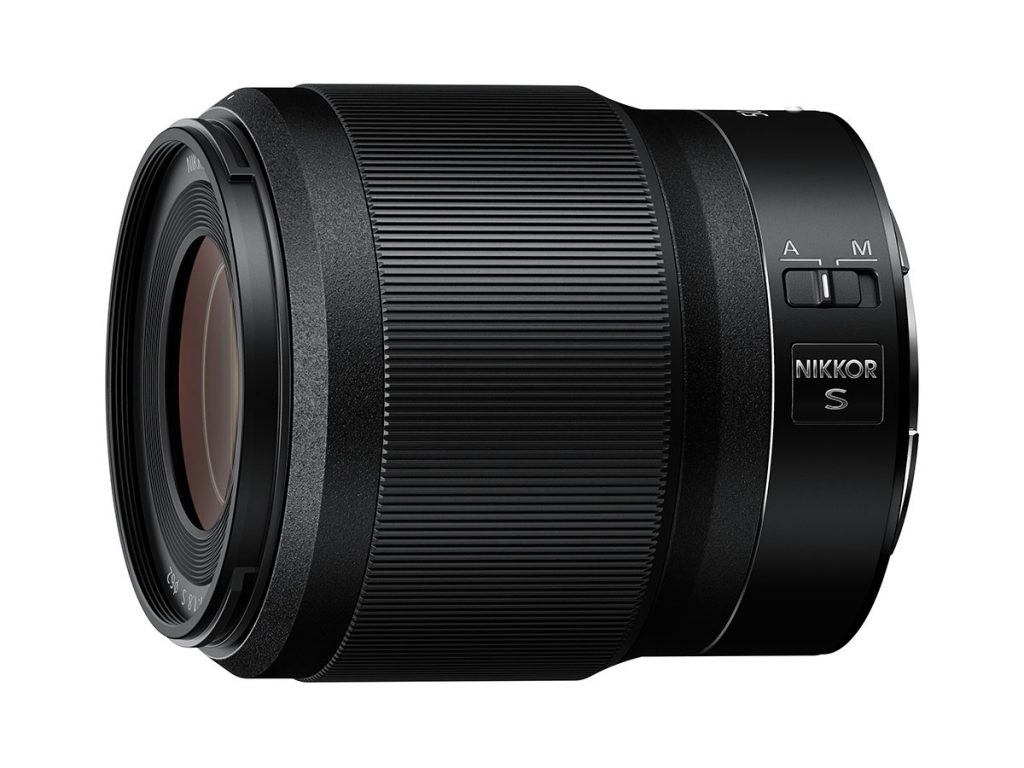


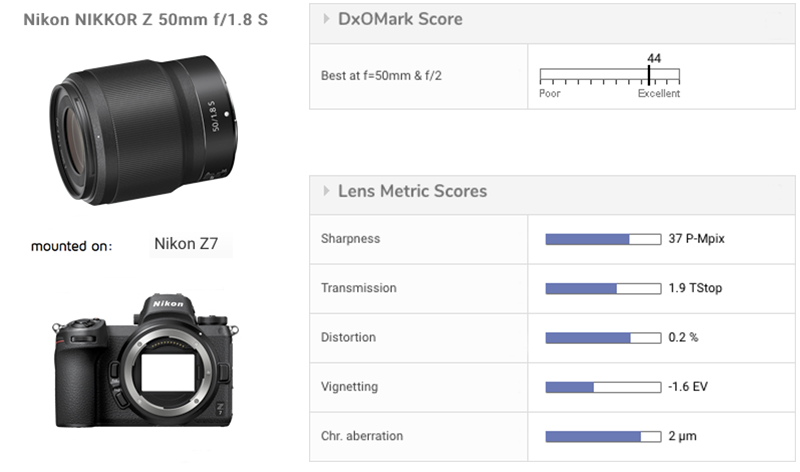
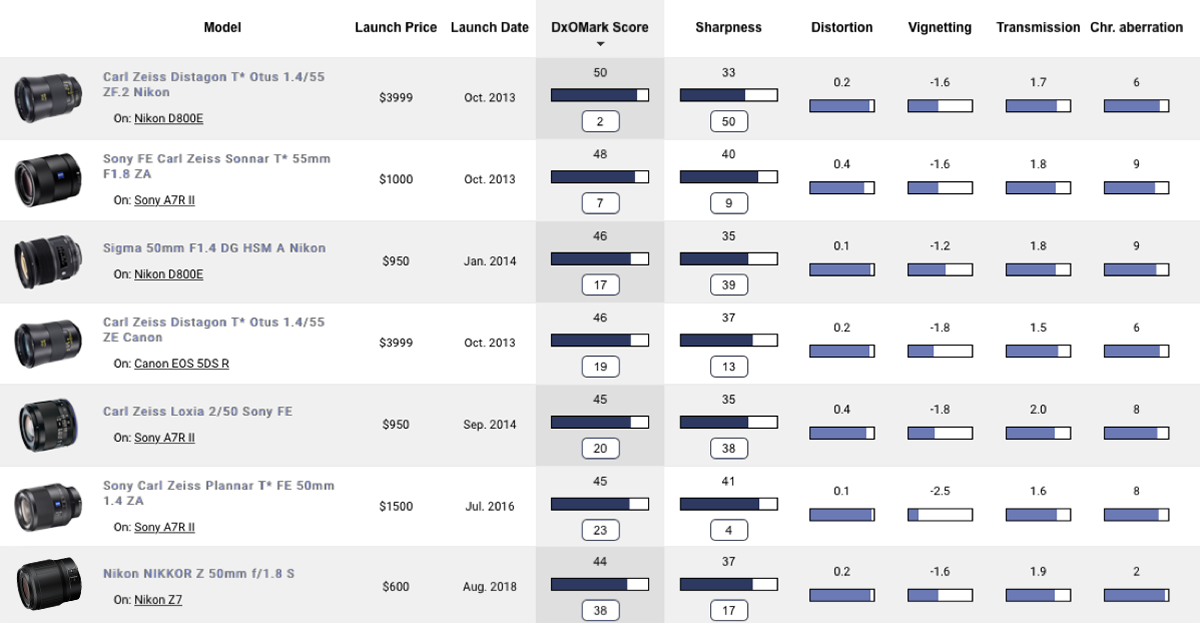
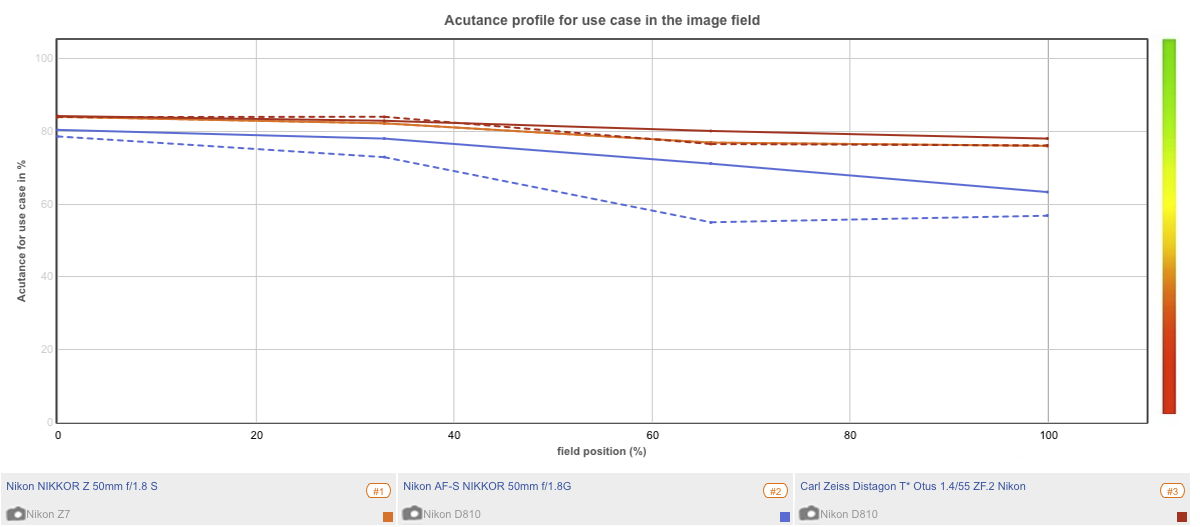
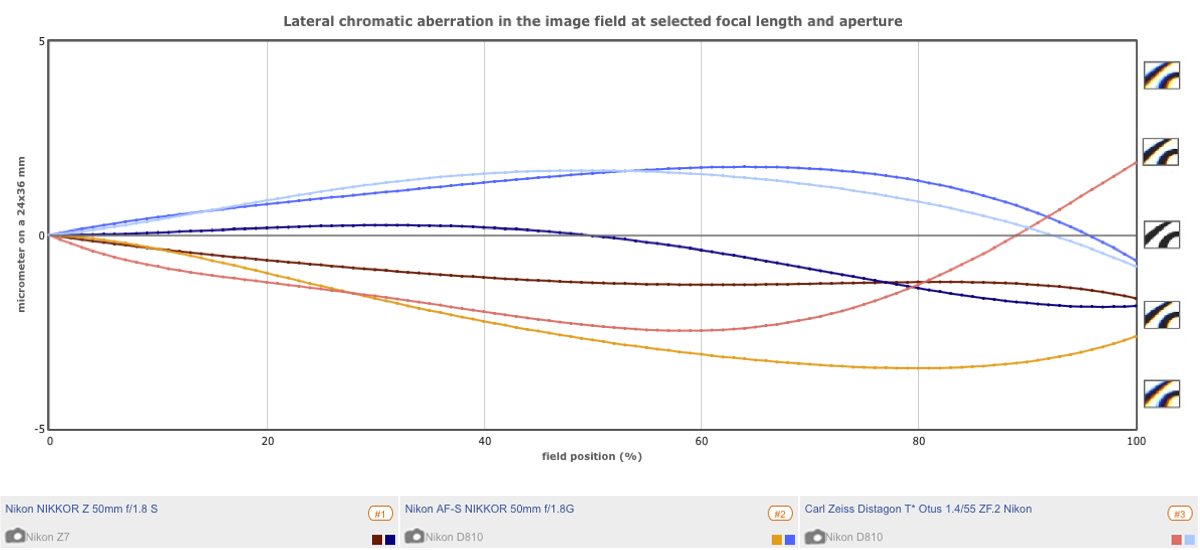
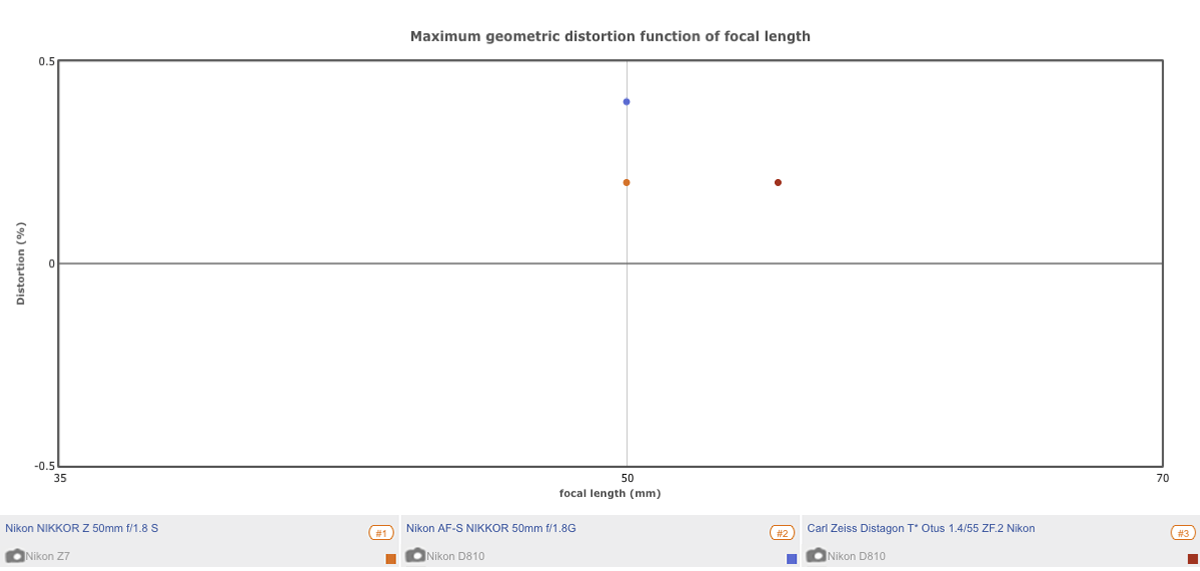
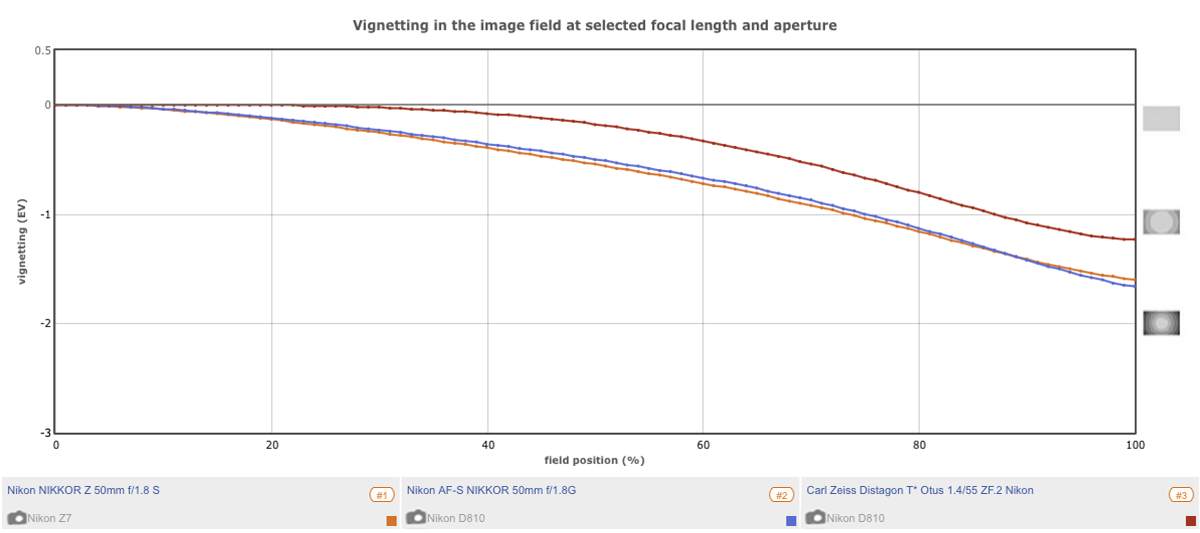
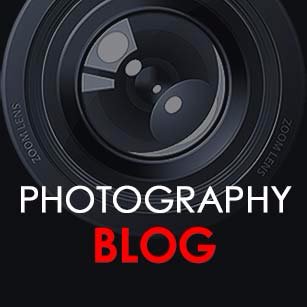

DXOMARK encourages its readers to share comments on the articles. To read or post comments, Disqus cookies are required. Change your Cookies Preferences and read more about our Comment Policy.